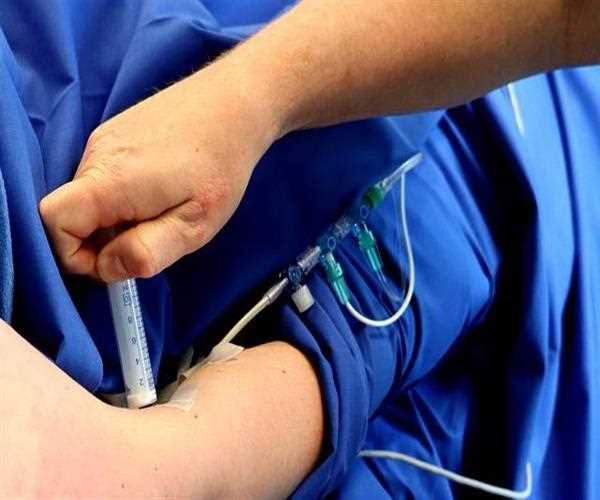
19-Sep-2022
How does an Anesthesia machine work?
How do anesthesia machines work?
Imagine having surgery without anesthesia. There is no doubt that fear is everywhere in patients who are scheduled for surgery. Although some experts attribute patient anxiety to a fear of anesthesia itself, understanding how a doctor administers anesthesia is very helpful in alleviating patient anxiety. Because the more you know, the more afraid you become.
Anesthesia machines are one of the most versatile medical tools in the medical field. Pneumatic devices allow doctors to calm the patient before surgery and help the patient fall asleep and breathe throughout the procedure. The main function of anesthesia machines is to help surgeons relieve patients' pain during medical operations. In this sense, anesthesia machines become patients' knights in shining armor, but few understand the inner workings of the machine.
Anesthesia history
The use of anesthesia dates back to ancient times when the ancient Egyptians used hemp and poppy plant sap to put them to sleep before surgery, but doctors didn't start administering sedatives until the mid-19th century. patient during surgery. On October 16, 1846, at the Massachusetts General Hospital, William T. G. Morton administered an effective anesthetic to a man with a vascular tumor in his left neck. Dr. Morton's use of ether sulfate to anesthetize patients ushered in a new era in surgical procedures and eventually led to the invention of the anesthesia machine as we know it today.
What is an anesthesia machine?
Anesthesia is a pneumatic device that delivers a mixture of oxygen, gas, and anesthetics to an unconscious but breathing patient during surgery. The device delivers oxygen while preventing the patient from exhaling life-threatening CO2. Remarkably, the design of the anesthesia machine has remained relatively unchanged since its invention. The main parts of the anesthesia machine:
Ventilator: Used to help the patient breathe during surgery.
Breathing Circuit: Allows air and gases to flow safely to the patient. Cleaning System: Removes 'waste' gases such as CO2.
Safety mechanism: Ensure the patient's well-being in an emergency. Let's take a closer look at how each part works in an anesthesia machine.
The Ventilator
A ventilator is an integral part of any anesthesia machine. A ventilator is a set of external lungs. Respiration for deeply sedated patients while maintaining normal respiratory rate and blood chemistry. Initially, the automatic ventilator was very simple with several modes of ventilation. Over time, fans have improved with many advanced ventilation modes: dual circuit, bellows design, turbine design, or single circuit piston configuration. The latest technology on the market is an innovative ventilation system that ensures accurate and reliable patient ventilation with a volume changer, fast flush, and flush times. With no moving parts, the risk of failure is minimized, ensuring high reliability and long life.
Breathing circuit
The breathing circuit is the part of the anesthesia machine that supplies essential gases to the patient and then removes the exhaled CO2. There are two types of breathing circuits: non-breathing circuits and rotational circuits. The non-breathing circuit sounds exactly like that. After expiration, the gas is released from the system and the patient no longer inhales it. The circulatory circuit is reversed. It removes CO2 exhaled by the patient and allows the patient to rebreathe the expired anesthetic gas. In the respiratory system, vaporizers help add the correct amount of anesthetic to the gas stream. In most machines, the total gas flow enters the evaporator and separates the clean gas into carrier gas and bypass gas. The carrier gas carries the anesthetic and then meets the circulating gas before entering the patient's breathing circuit. The operator can control the split ratio to increase or decrease the gas concentration, thereby controlling the amount of anesthesia the patient receives.
Compensation system
The anesthesia machine purge system collects and removes anesthetic gases from the operating room. In an active system, extraction degassing. Passive systems allow gas to escape through ventilation. If the anesthesia machine requires an active system, the surgeon must protect the patient's airway from the inhalation device. On the other hand, manual systems only require pressure control. Anesthesia machines release alarming amounts of greenhouse gases into the Earth's atmosphere, so medical facilities want to deliver as few greenhouse gases as possible.
Also read why hospitals have a uniform for everyone.
Security
Anesthesia machines have many alarms to notify medical staff if a patient is in a serious or dangerous situation.
These 'disconnect alarms' are triggered when the patient is connected to the ventilator during surgery. There are at least three disconnection alarms at the anesthesia workplace. One warns the team of low pressure in the breathing circuit, a second warns of low expiratory volume, and the third warns of low expiratory carbon dioxide. Any of these conditions may indicate that the patient is at risk. Therefore, doctors must closely monitor patients to ensure their safety during surgery.
Modern machines use more electronically controlled components than ever before, so it's important to make sure your anesthesia machine has at least 30 minutes of battery life in the event of an unexpected power outage. Within 30 minutes, the surgeon closes the door and the operator can safely 'resuscitate' the patient in an electrical emergency.

Student
An inquisitive individual with a great interest in the subjectivity of human experiences, behavior, and the complexity of the human mind. Enthusiased to learn, volunteer, and participate. Always driven by the motive to make a difference in the sphere of mental health - and normalize seeking help through a sensitive and empathetic approach
Comments
Join Our Newsletter
Subscribe to our newsletter to receive emails about new views posts, releases and updates.
Copyright 2010 - 2025 MindStick Software Pvt. Ltd. All Rights Reserved Privacy Policy | Terms & Conditions | Cookie Policy